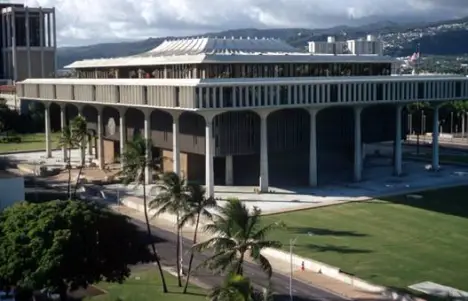Lt. Gov. Shan S. Tsutsui and the Hawaii Departments of Health (DOH) and Education DOE) together announced the state’s inaugural Excellence in Wellness Awards for Hawaii schools that have reached high levels of achievement in meeting DOE Wellness Guidelines.

Eight windward schools were the first to receive their awards, presented yesterday at the annual Windward District Fitness Meet at Castle High School. Each school scored 90 percent or above on the state’s Safety and Wellness Survey in school year 2011-12.
“I commend these and other Hawaii schools for taking the important steps toward improving the health and wellness of our keiki,” said Lt. Gov. Tsutsui. “The Wellness Guidelines play a critical role in helping our students to be healthy and ready to learn. By setting standards for food and beverages provided to students, as well as goals for health
and physical education along with activities that promote a healthy environment, we are setting our children on a path to making healthier choices as adults.”
Windward schools honored today were Ahuimanu, Benjamin Parker, Heeia, Kaneohe, Kapunahala, Keolu, Laie, and Blanche Pope Elementary Schools. A total of 50 schools statewide will receive awards at local ceremonies in the coming weeks.
“Schools play an integral role in promoting student health through education, good nutrition, and other school-based activities that lend to achievement and learning,” said Superintendent Kathryn Matayoshi.
Hawaii’s public schools have direct contact with more than 80 percent of the state’s children ages 5-17. By promoting regular physical activity and offering nutritious foods, schools are ideal locations to nourish children’s minds and bodies.”
“The Excellence in Wellness Awards demonstrate the success of DOE-DOH partnership in creating healthy school environments that support student and staff well-being,” said Health Director Loretta Fuddy. “We will continue to work closely with schools to sustain high standards for health education and create healthier learning environments.”
All 50 schools will be eligible to apply for DOH grant funds up to $8,000 per school to support implementation of Wellness Guidelines in school year 2013-14. A total of $160,000 will be available to be divided and awarded between the best qualified applicants. More information about the DOH funding opportunity will be released soon.
The DOE Wellness Guidelines include standards for foods and beverages provided to students, as well as goals for health education, physical education, and other activities that support a healthy school environment. All public (non-charter) schools are expected to comply. The Safety and Wellness Survey (SAWS), an annual online survey jointly administered by the DOH and the DOE to public school principals statewide, is used to monitor implementation of the Guidelines. The Windward District Fitness Meet is an annual event that demonstrates Windward District schools’ commitment to wellness. Through out the school year, students have been preparing for the Fitness Meet in their Physical Education class. Physical Education is an essential component of the DOE Wellness Guidelines and helps students reach the recommended amount of physical activity.
For more information on the Wellness Guidelines, see the HIDOE Wellness Guidelines Toolkit at: http://doe.k12.hi.us/foodservice/toolkit/index.htm
Filed under: Announcements, Education, Hawaii, Health, Kids, State Affairs | Tagged: Elementary school, Excellence in Wellness Awards, Physical education, Shan Tsutsui | Leave a comment »





























